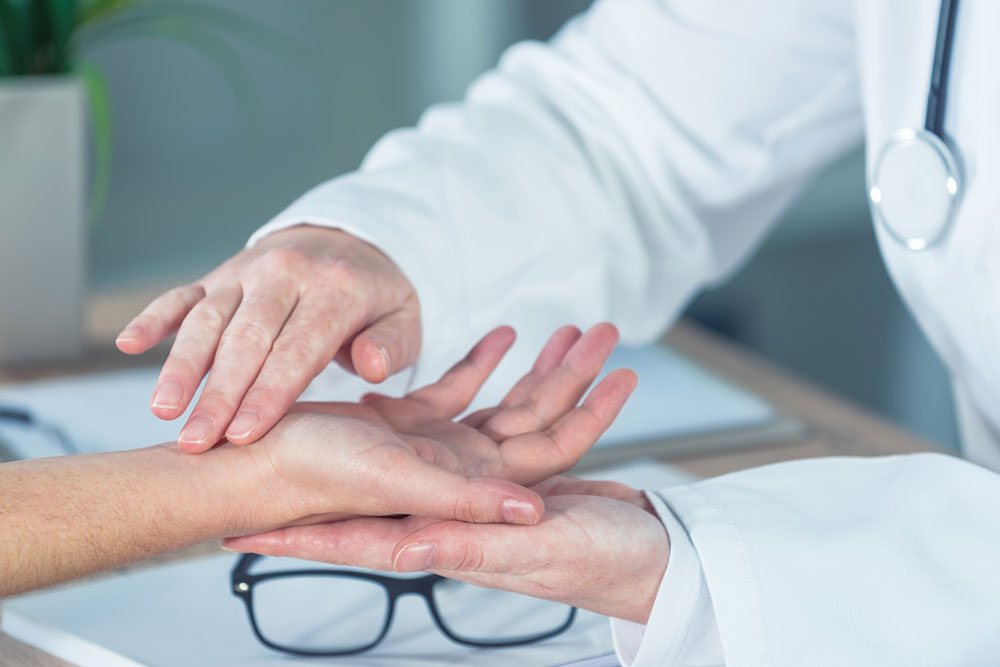11 Common Symptoms of Dermatomyositis
Dermatomyositis is a rare inflammatory disease that may commonly occur in children between 5 and 15 years. It may even affect adults in their late 40s to early 60s. While a cure for dermatomyositis is yet to be discovered, the line of treatment involves improving symptoms and reducing the risk of recurrence. Individuals affected by the condition must be mindful of the associated symptoms so that they can be diagnosed and managed promptly.

1. Rash
One of the first symptoms of dermatomyositis is a rash. It looks like a violet-colored or dusky red rash that appears swollen. It may surface on parts of the body commonly exposed to the sun, including the face and eyelids, knuckles, knees, chest, and back. The rash, which is usually painful and itchy, is the first noticeable indication of dermatomyositis and should not be ignored.
2. Muscle pain
Discomfort may occur due to injuries or excessive strain on the muscles. This pain may go away with time or with appropriate treatment. But, painful sensations in the muscles that do not go away could indicate health complications like dermatomyositis. Since there is muscle tissue in most parts of the body, the affected person may experience pain everywhere. Muscle aches can make it difficult for one to complete regular movements, including getting up from the floor or climbing stairs. One must get this diagnosed by a healthcare expert immediately and initiate relevant treatment to manage the pain.
3. Calcium deposits
A common symptom noticed in children with dermatomyositis is calcium deposits. This may occur in regions including the skin, muscles, and connective tissues. The deposit may harden tissues, organs, or blood vessels. As a result, the body’s normal processes may not function properly. Calcium deposits are also one of the early signs of the disease.
4. Fever
People with dermatomyositis may experience fever. They may also develop a fever with other dermatomyositis symptoms like body pain. Some patients with dermatomyositis may also notice an unexplained reduction in body mass index (BMI). In either case, one should get the symptom checked by a doctor and treat it as soon as possible.
5. Trouble swallowing
One may experience trouble swallowing (dysphagia) for various reasons, including dermatomyositis. Since the condition affects muscles, it can also affect the ones present in the esophagus. If the muscles are swollen or damaged, they may narrow and block the esophagus, which causes dysphagia. The symptom may also make one feel like food is stuck in the throat or chest or behind the breastbone. It must be diagnosed and treated at the earliest to avoid further complications. For instance, someone who experiences difficulty swallowing may breathe food or liquids, including saliva, into the lungs. This could trigger complications like aspiration pneumonia, which will require immediate healthcare attention.
6. Shortness of breath
Lifestyle habits like excessive exercise routines and even health conditions like a common cold can trigger shortness of breath, which usually goes away with proper remedies. But, if one notices this symptom out of the ordinary, or if it does not go away, it could be an indicator of more severe health problems like dermatomyositis. Shortness of breath is also associated with inflammation in the muscles of the throat, which can narrow the airways and trigger respiratory problems.
7. Hoarseness
A common dermatomyositis symptom is hoarseness, also known as dysphonia. One might notice their voice gets raspy or strained, and it may also sound softer, higher, or lower than usual. These symptoms might make it difficult to speak. Hoarseness may also be associated with other symptoms of dermatomyositis, such as difficulty breathing or swallowing, and must be addressed immediately.
8. Joint pain
Joint pain may occur throughout the body. This symptom might indicate various health conditions, including dermatomyositis. Joint pain can range from mild to severe, and based on it, the required treatment is determined.
9. Bumps on the knees or elbows
While bumps may appear on the knees and elbows for various reasons, including an allergic reaction or an injury, the symptom might even be triggered by health conditions like dermatomyositis. The bumps on the knees and elbows could range in size from small to large, can be soft or hard, and may or may not be inflamed. When left untreated, the health condition may even cause permanent damage to one’s skin.
10. Pain in the stomach
Gastrointestinal ulcers are a common complication of dermatomyositis in children. These may develop on the inside lining of the stomach and upper portion of the small intestine. Children with gastrointestinal ulcers might experience stomach pain. Other symptoms that may indicate the presence of an ulcer include a feeling of fullness, bloating or belching, heartburn, nausea, and an intolerance to fatty foods.
11. Paleness
Dermatomyositis can often cause health conditions such as Raynaud’s phenomenon. People with this condition may notice their toes, fingers, cheeks, nose, and ears turning pale when exposed to cold temperatures. The condition caused by dermatomyositis may also result in the fingers or toes feeling cold, and warming them may trigger a prickly, numb feeling.